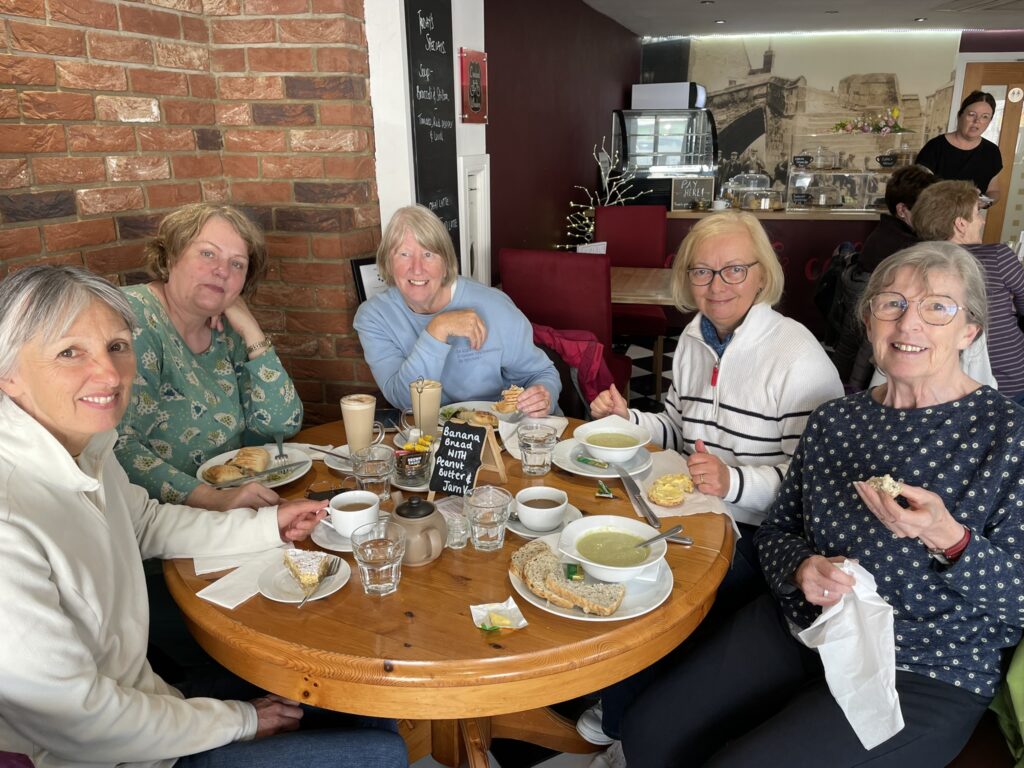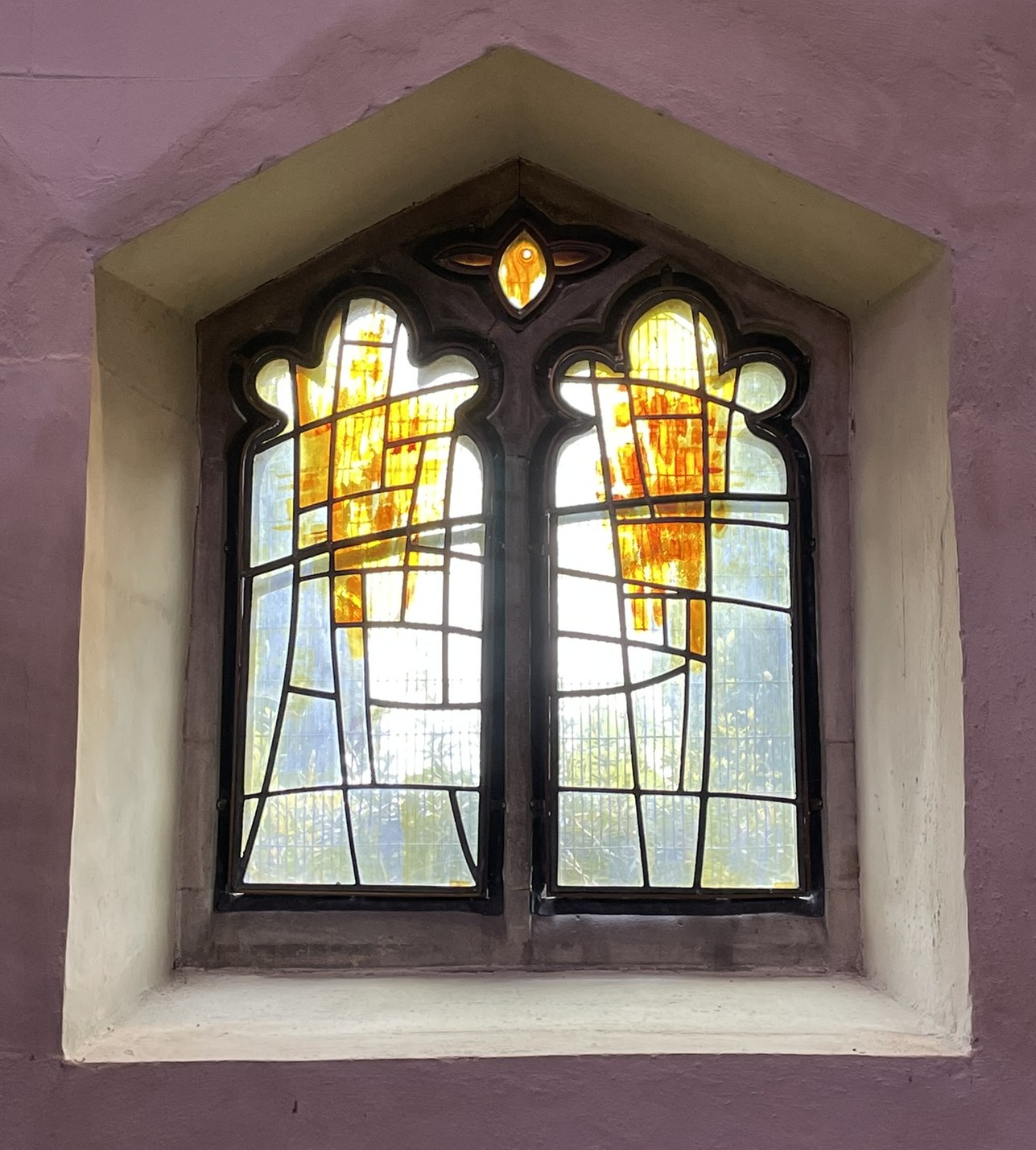Today, for curious newcomers to the Fens, but known to locals for miles around, this rather unexpected building rises out of the flat endless agricultural fields and ditches as an inexplicable marker of bygone times. Hardy folk long ago created this amazing community in a highpoint of dry land amidst the marsh and tides in eastern Lincolnshire.
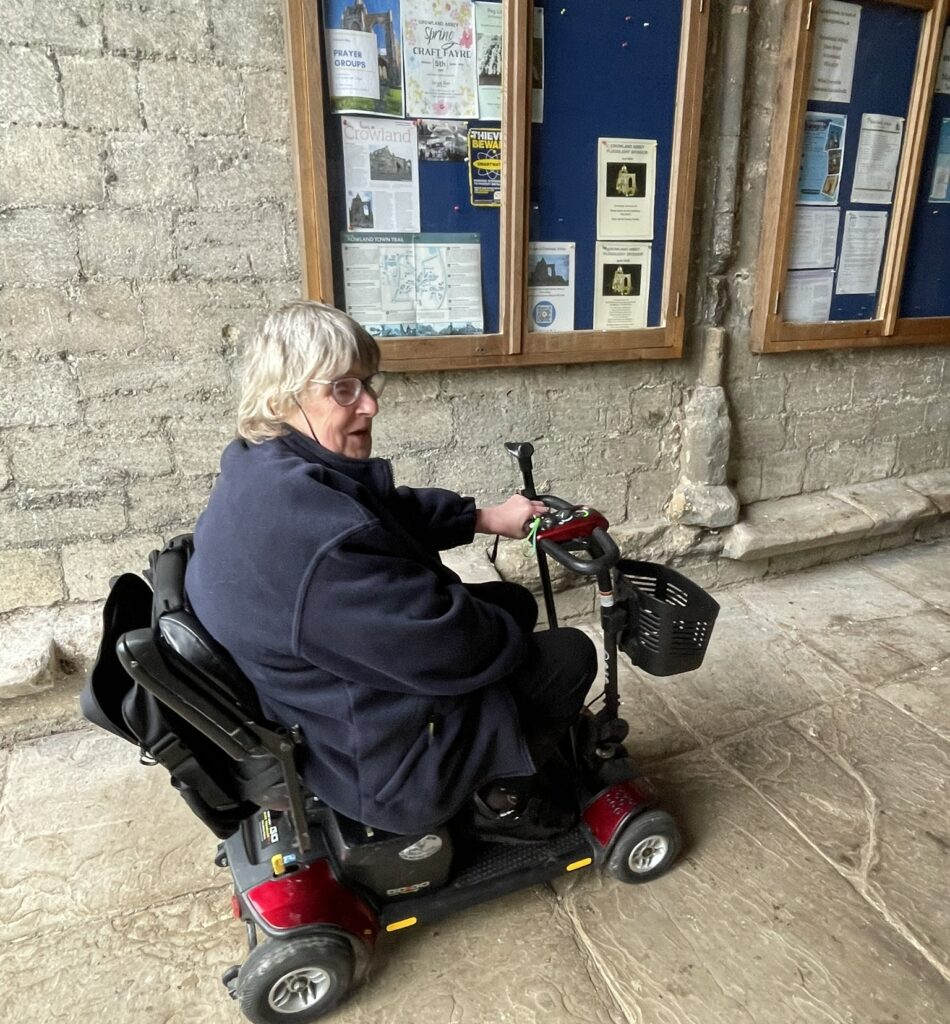

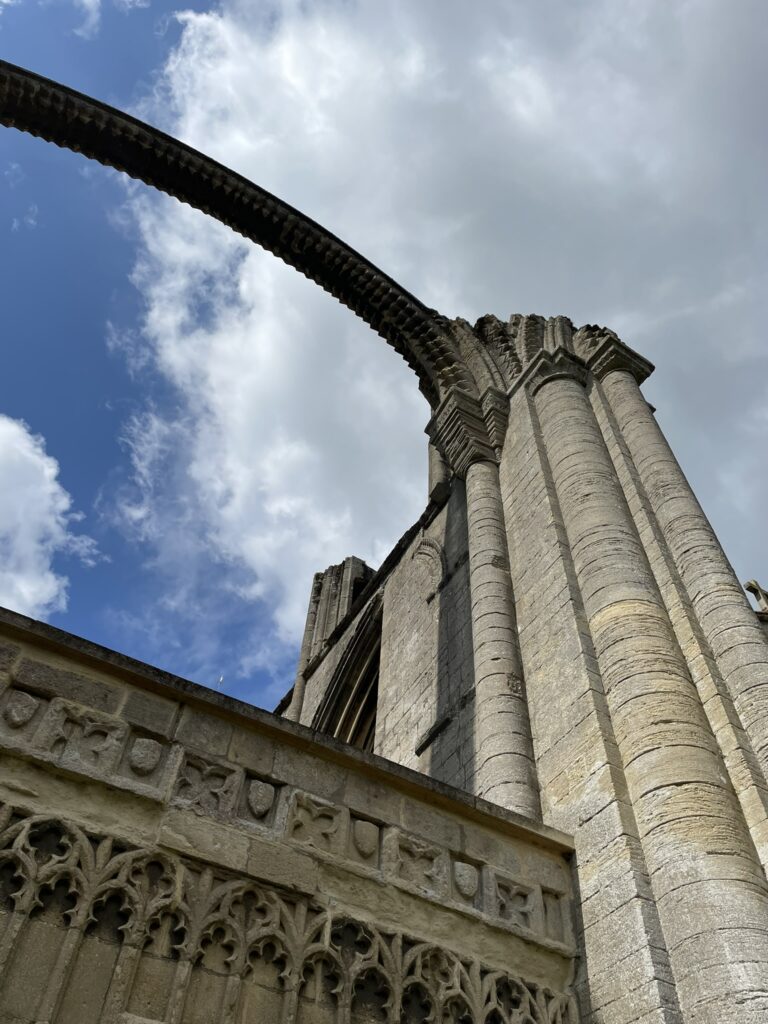

The Benedictine abbey remains are largely below the current churchyard and parkland beyond and those above ground are a hotchpotch of different architectural styles and leftovers from the Dissolution and the Civil War. The churchyard though boasts more listed gravestones than Highgate Cemetery. I rather liked the idea that the known 5,000 and the suspected 12,000 burials resting in the earth do so amongst the former cloisters, dormitory, brewhouse, and various monastic buildings of former times. Like visitors today they enjoy the beauty, peace and tranquillity of this beautiful place.
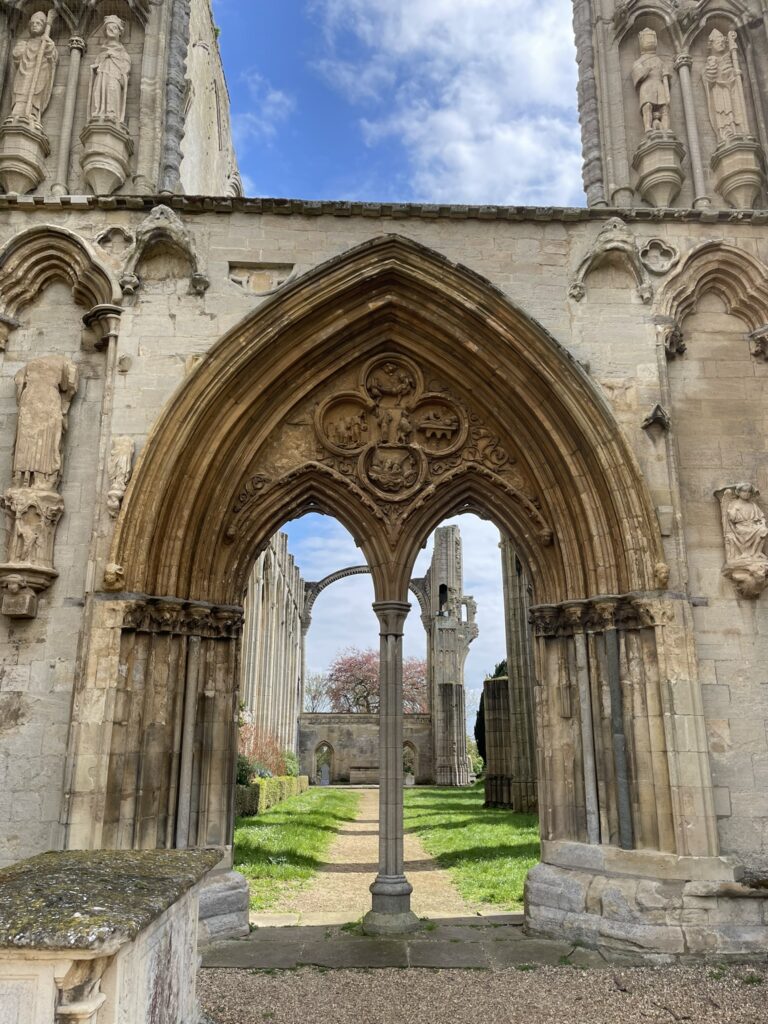
We began seated quietly in the North Aisle of Crowland Abbey church. David the churchwarden asked us to listen to the monastic musical chanting playing to appreciate how in the early medieval period the monks might have experienced Benedictine hours of prayer in what remains of the building once the size Peterborough Cathedral is today.
Gazing up and around at the creamy Ancaster stone remains of the former Benedictine Monastery finally dissolved on 4th December by Henry VIII in 1539 after almost 800 years of existence (the Abbot and 27 monks subscribed to the Royal Supremacy in 1534, lasting for 5 years as up and down the country monastic houses fell to Henry’s axe). We learned from David about the charismatic 7th century man Guthlac who inspired the earlier 3 monasteries on the site dedicated to him.
St Guthlac
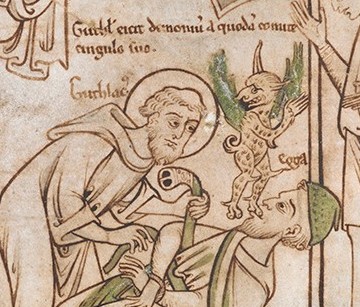
Thanks to a contemporary monk and scholar Felix who recorded his life and deeds we know much about the Saxon Guthlac: his early life and connection to the Mercian ruling family; his deeds as a pagan soldier and conversion to Christianity aged 24; his vows abstinence to God. Choosing the remotest part of England on the Island of Crowland he withdrew from life, first inhabiting a former Bronze Age chambered burial mound as his cell along with other men who had taken the tonsure and established a small community deep in the Fens of Mercia.
He died aged 41 in 714AD which led soon after to the founding of a shrine around which a wooden hall and monastic community was dedicated to him. You need to attend an abbey tour to understand how this came about. Viking raiders and a careless lead roofer resulted in three destructive fires in 866, 1071 and 1170 before the monastery reached its zenith enjoying 400 years of considerable prosperity until the dissolution. Today we know this as Crowland Abbey.
Guthlac Scroll
Residing now in the British Library but kept for centuries in the strong box in the abbey. This parchment was created here in Crowland Abbey. Nearly three metres long and seventeen centimetres wide, the Guthlac Roll gives a unique account of the important events in the life of St Guthlac in eighteen circular pictures, or roundels. This unique Roll was probably a plan for something else where sequences of round pictures are more common e.g. a stained glass window or for sculpture, like we see over the double doorway to the right of the west door of this church.
Although incomplete the roll recounts the life of Guthlac in 18 roundels, we see it starting with his decision to devote his life to the Christian faith ending with his ascent into heaven.
We can only trace the history of its ownership back to the seventeenth century when it belonged to Sir Robert Bruce Cotton (1571 – 1631). After that it belonged to members of the Harley family until it was sold to the nation in 1753. The Guthlac Roll is now preserved in the British Library. https://blogs.bl.uk/digitisedmanuscripts/2014/04/on-a-roll.html
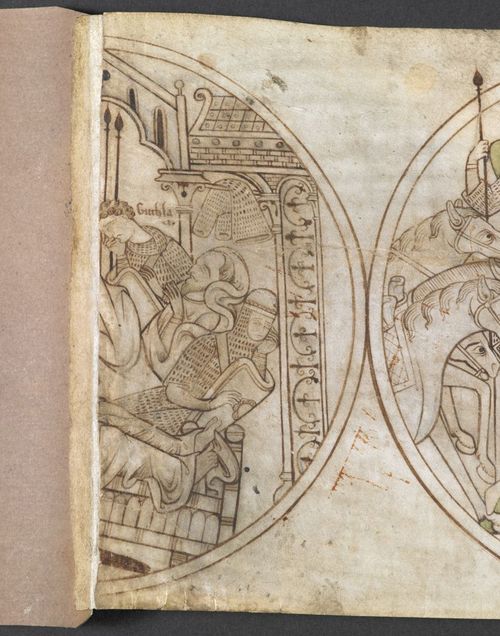

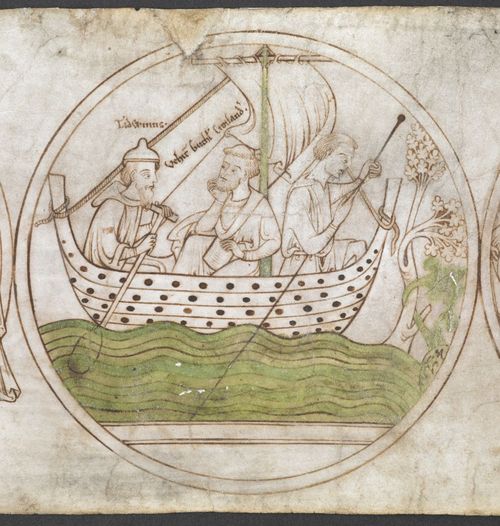
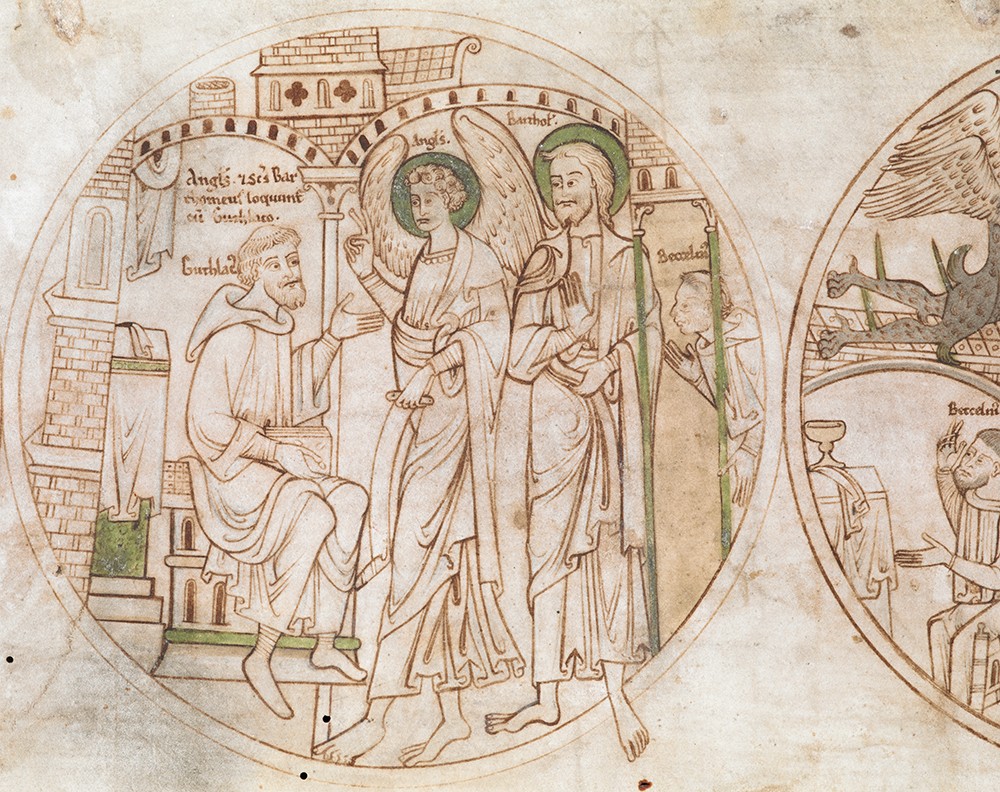
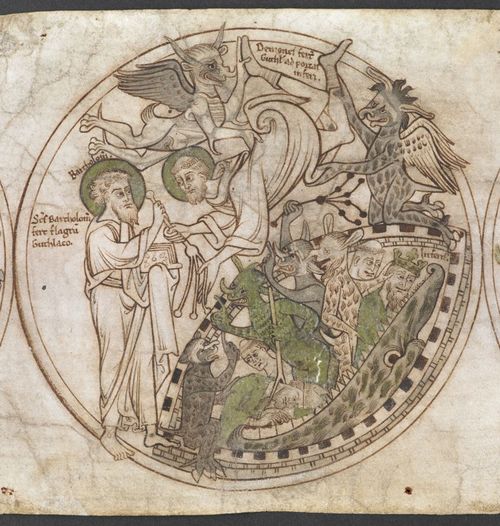
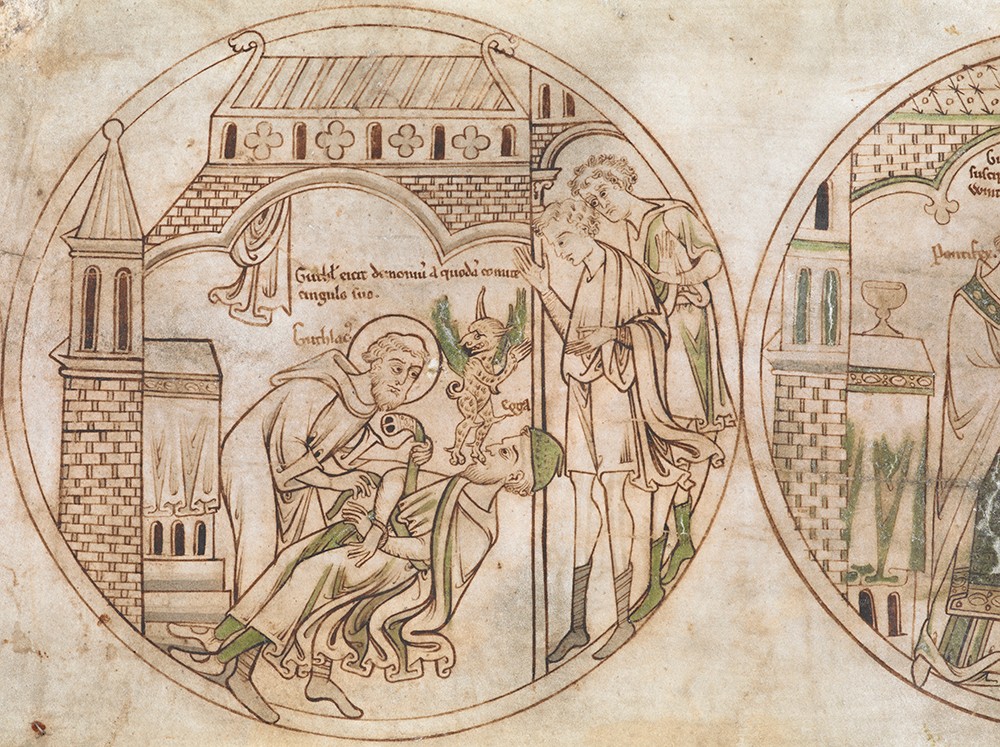

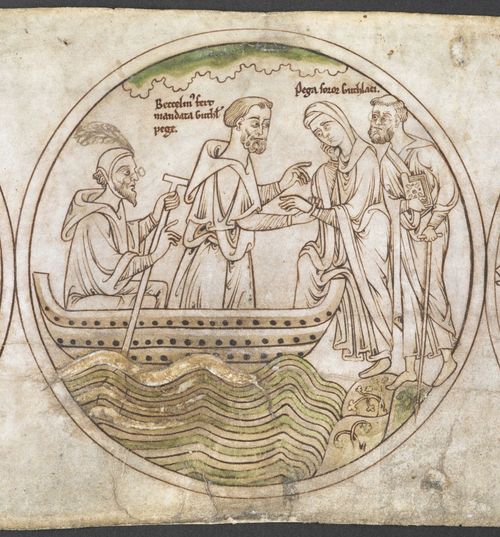
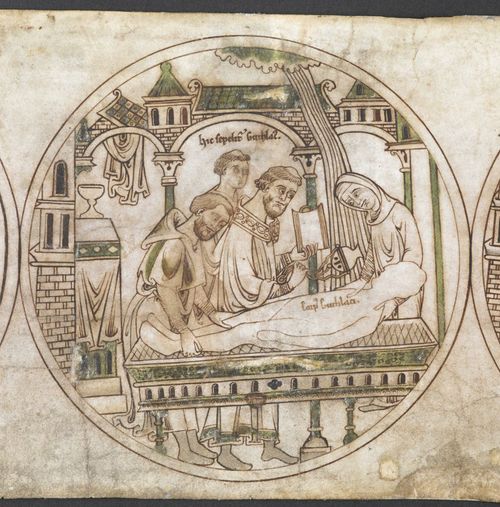
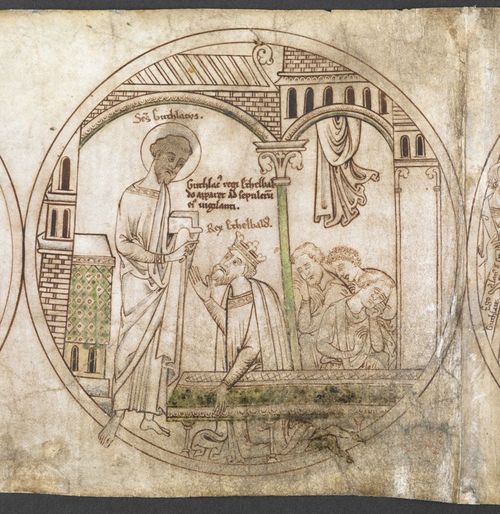
Inside the North Aisle
We learned about many changes over the centuries – once a cruciform church the size of the current Peterborough cathedral the wide north aisle endures as the parish church, with many internal movements of former galleries, pillars, walls, windows and even two fonts. I cannot do justice to the wealth of information and interesting snippets conveyed by Mike our tour guide. History enthusiasts cannot fail to be captivated by the marvellous way he brought the years of the building to life.
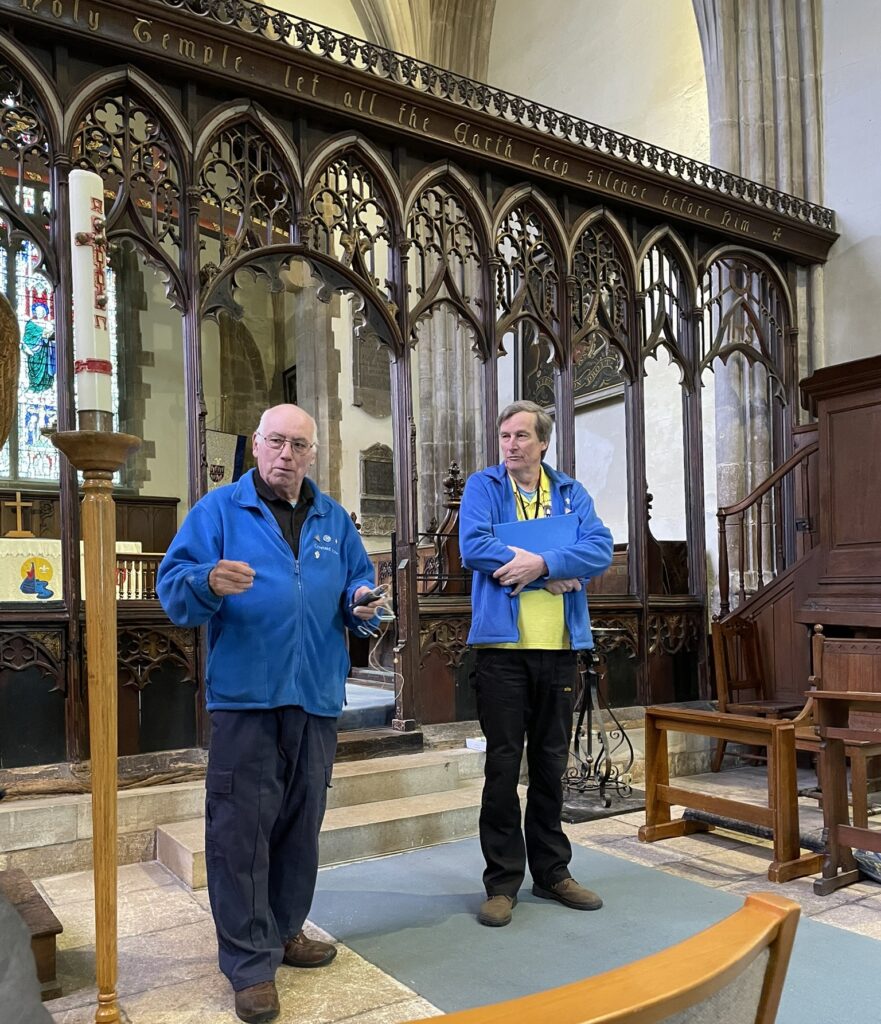
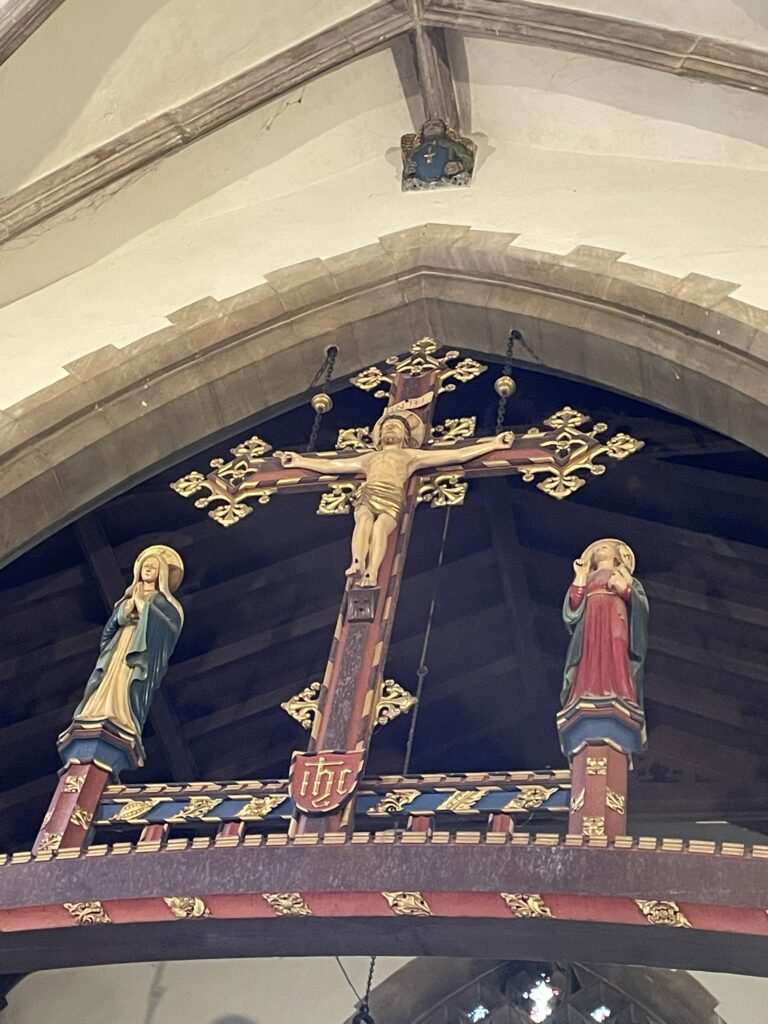
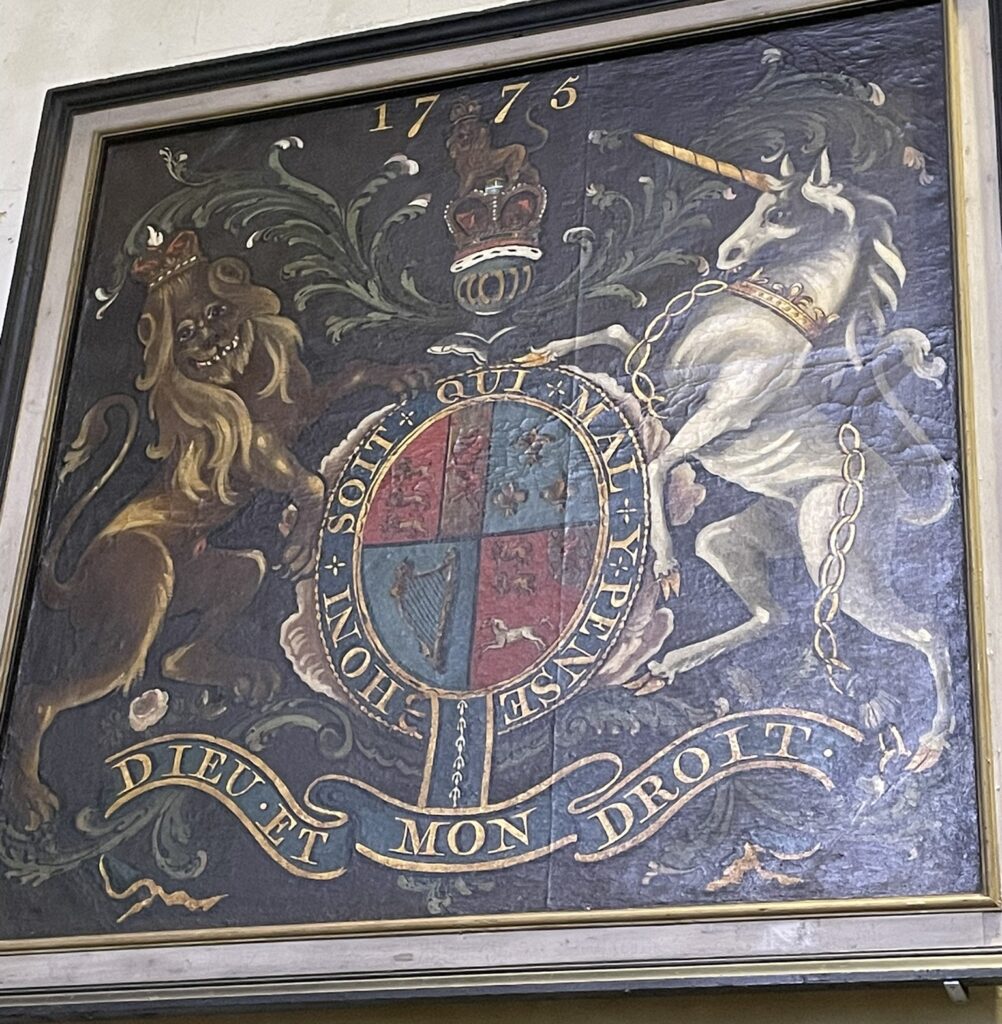
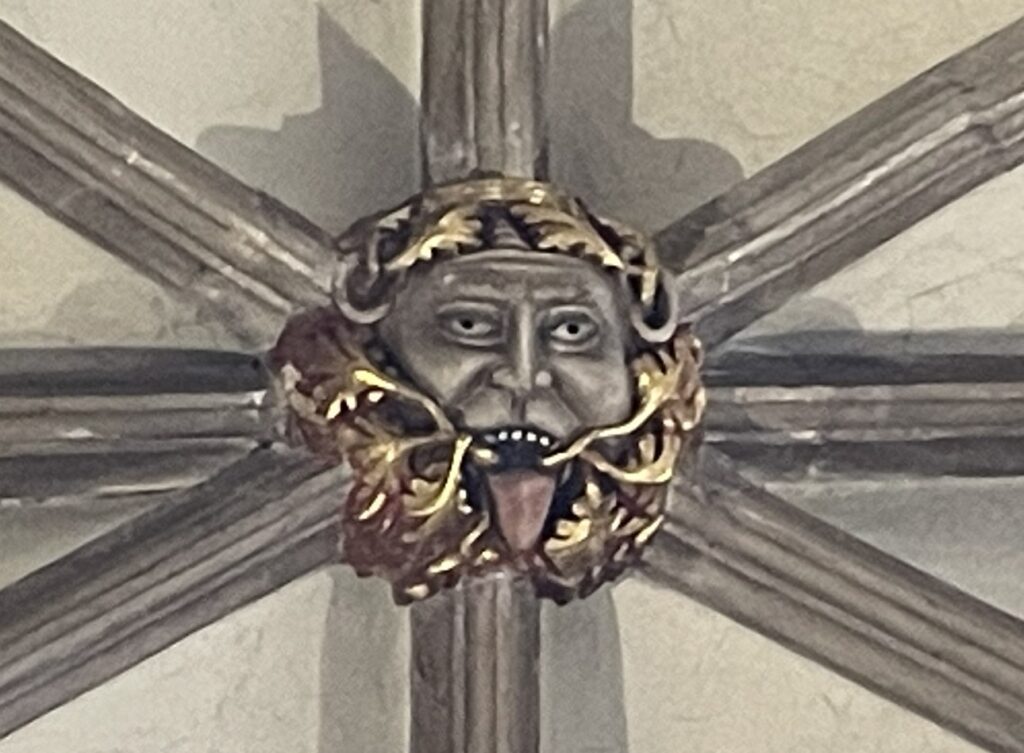
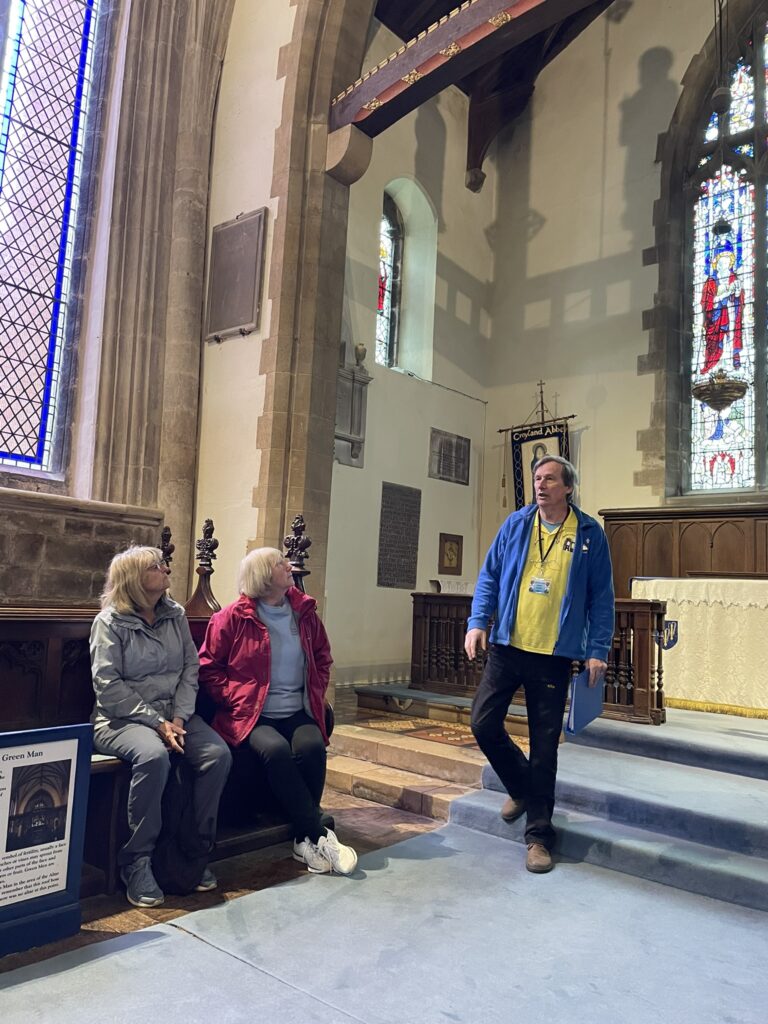
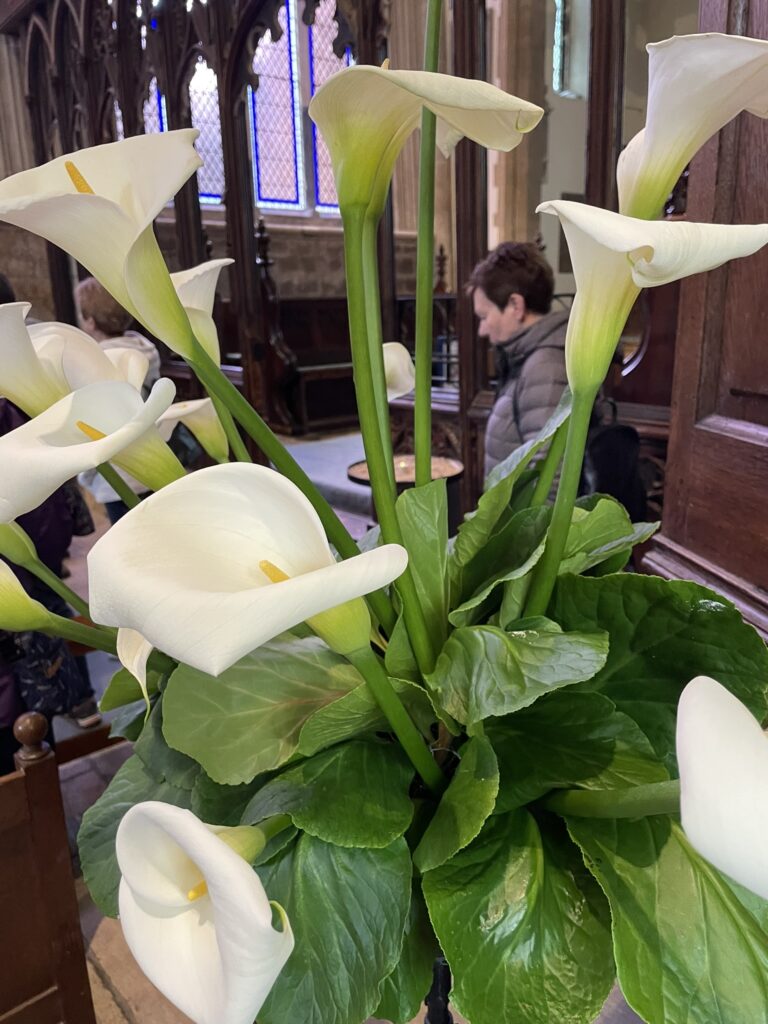
The longest bell ropes in England

The current bell tower houses 6 named bells : Bartholemew, Beccelm, Turkeytel, Tatwin, Pega, Bega.
With ringers coming from all over the country to ring them.
The weight of the bells is the reason for the tower subsidence (and the very poor conditions underground for a building of this size).
Haley’s Comet
Of all the interesting facts we heard and observed today, the most enduring one for me is of the Norman stone mason who carved a representation of the passing of Haley’s comet in the night sky.
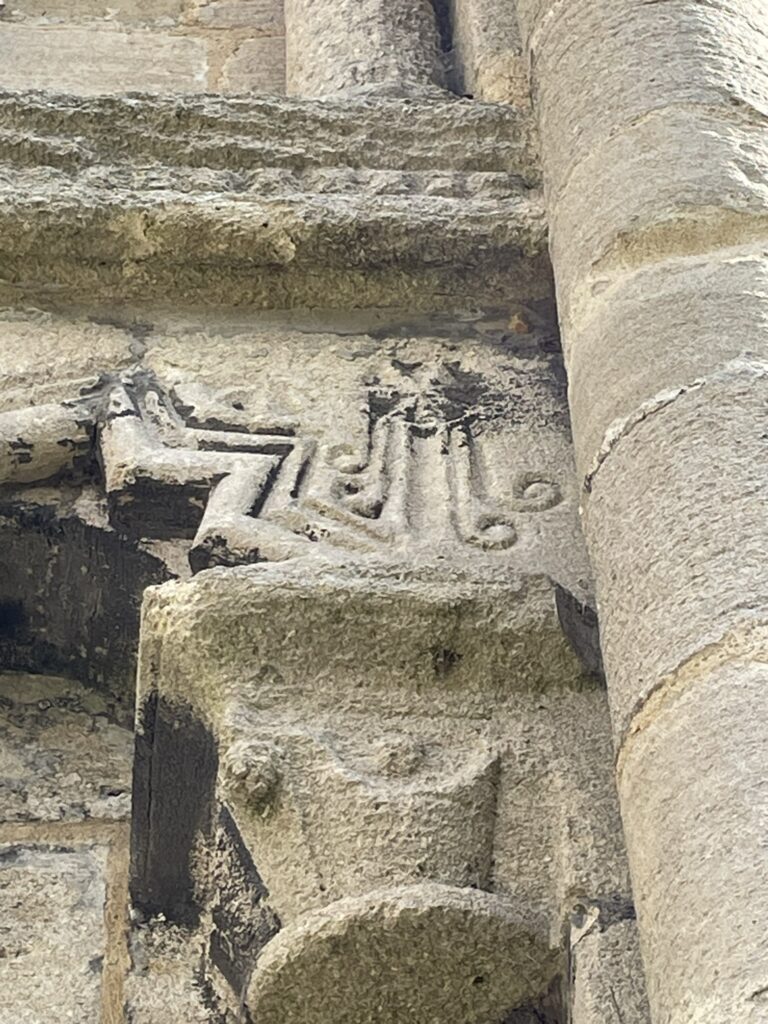
Only the second known recording of this event – after the Bayeux Tapestry.
This is to be found on a corner of the west facing front as you walk anti-clockwise around the exterior of the building.
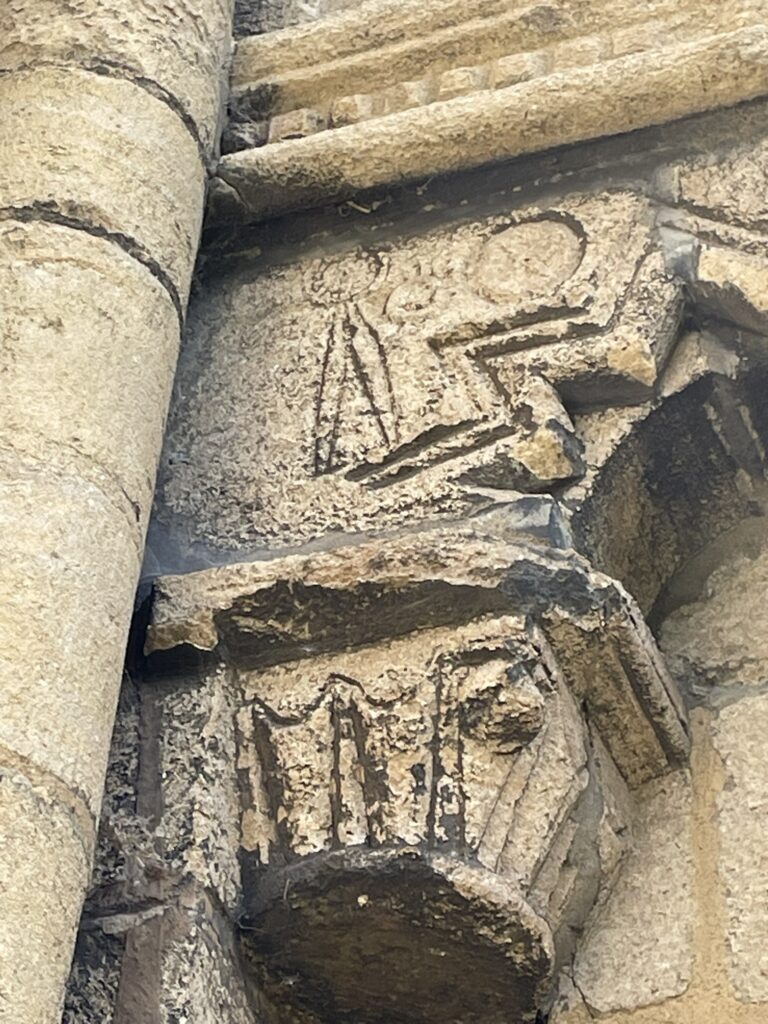
Opposite the comet carving are those that represent the stone mason.
A salient reminder that men quarried, carried, carved and raised these stones into place.
Throughout Crowland evidence of the robbed out stone can be found in houses, walls and gardens.
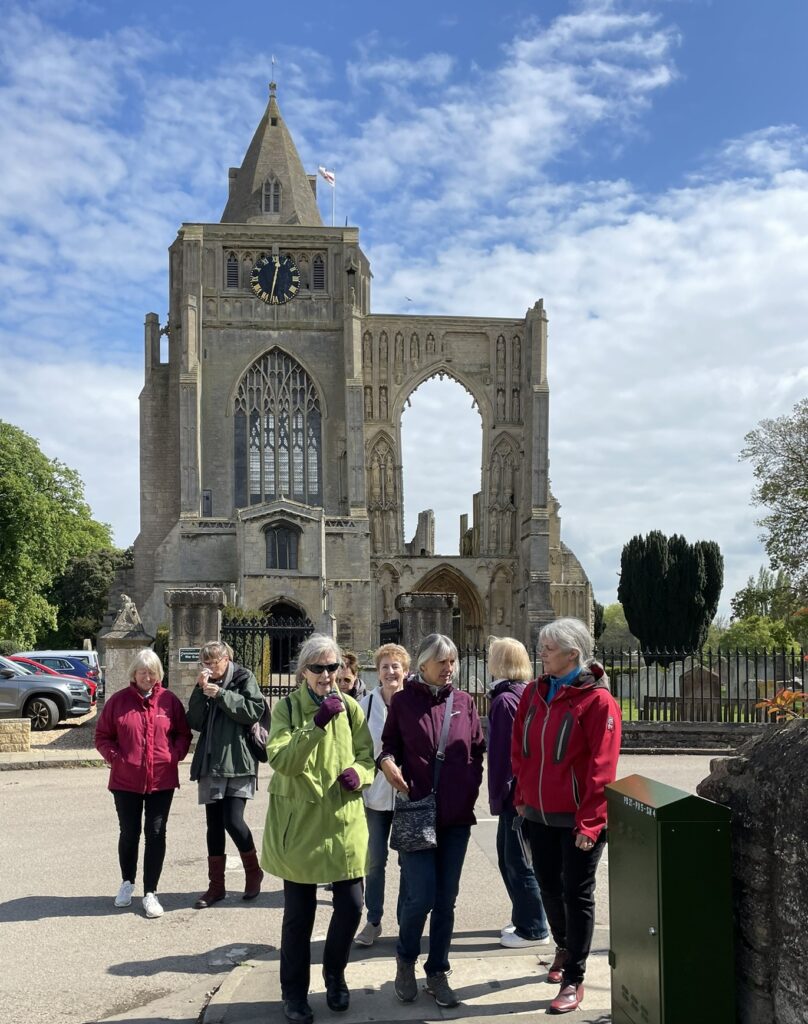
Trinity Bridge
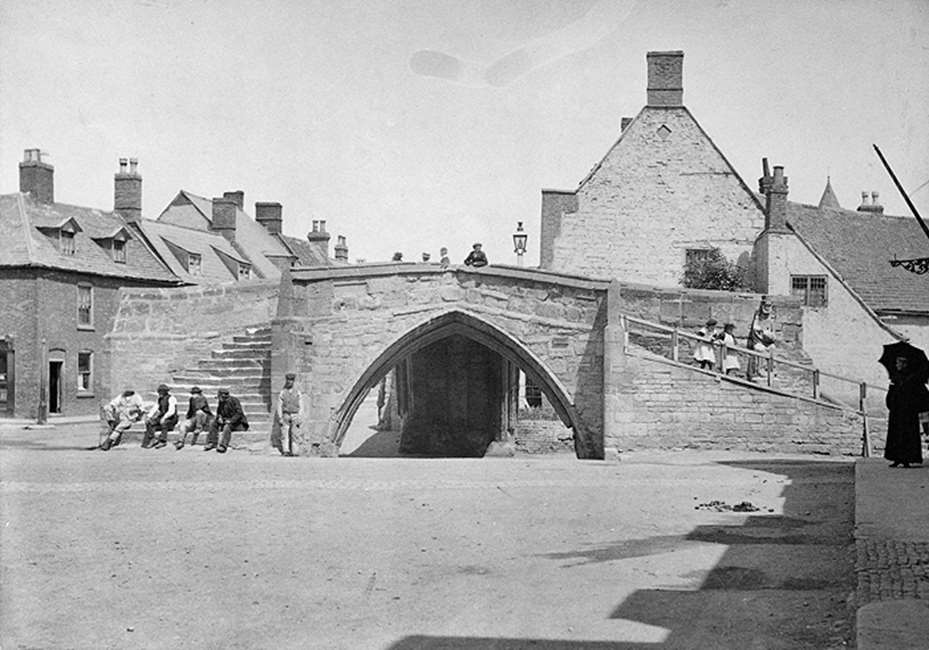
Holy Trinity Bridge was built in 1360-1390 by Benedictine monks. Until the early 17th century the River Welland flowed through the village and divided into two channels under the bridge. Water was directed to the nearby monastery through a water gate. The bridge now stands high and dry near the market place in Crowland. It is unique in Britain. It is formed of three pointed half-arches in the form of a triangle. The bridge was originally crowned with a tall canopied cross. The stone statue was placed there in 1720 and is believed to have come from Crowland Abbey.
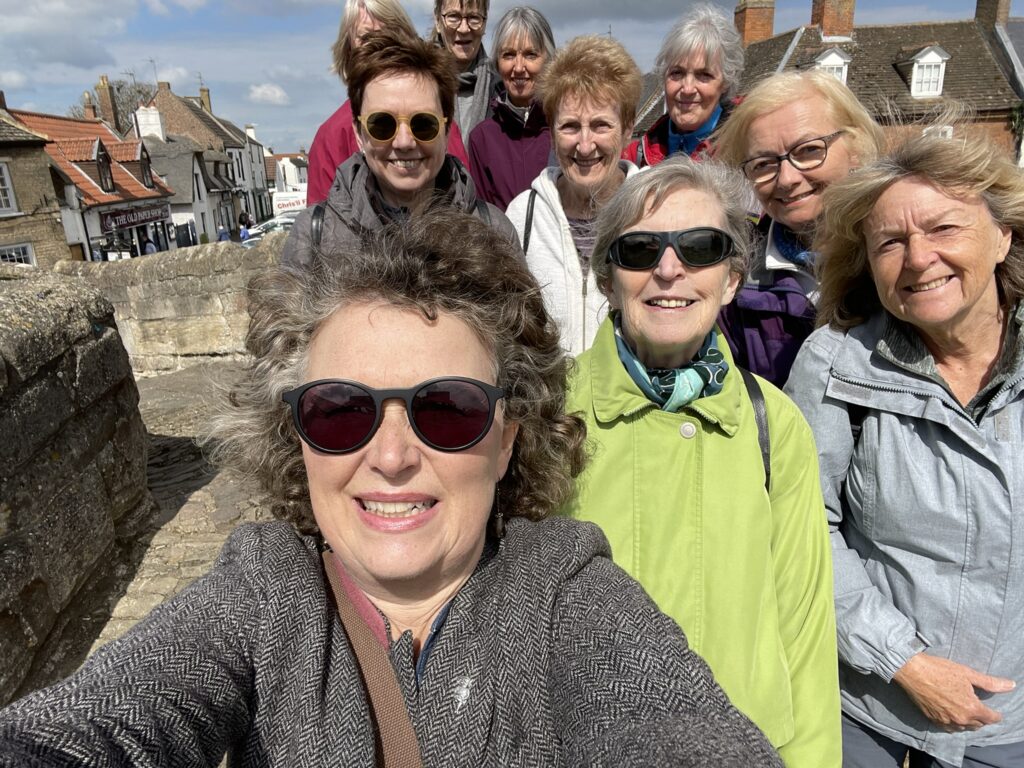
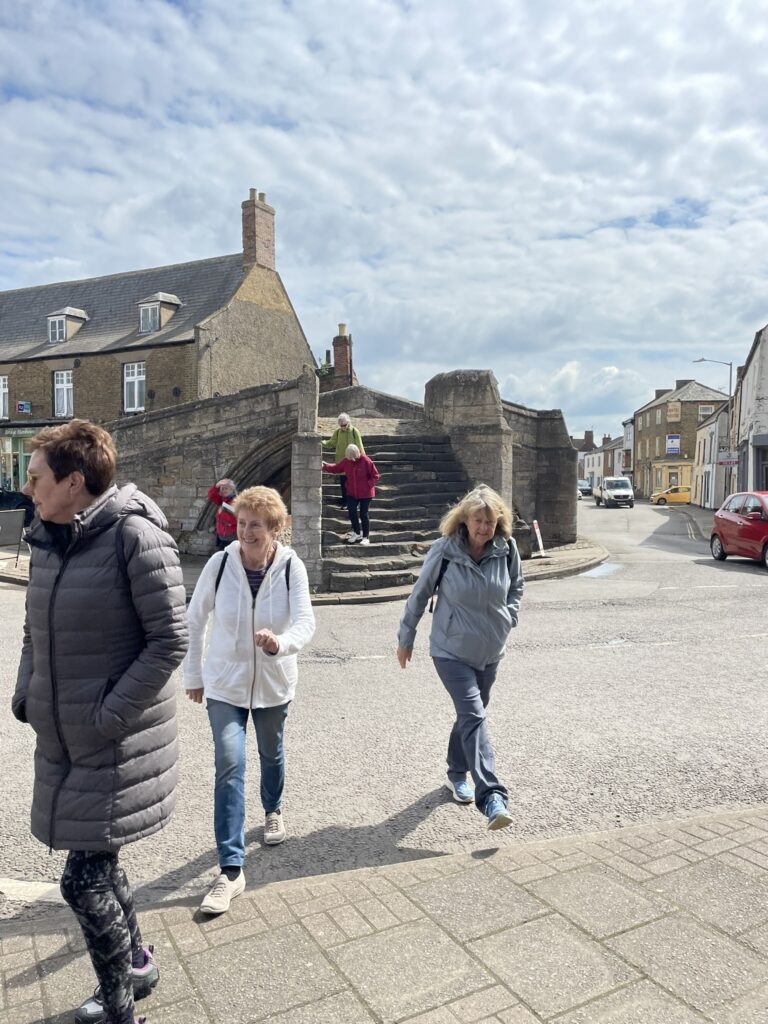
The Old Paper Shop cafe
We were given a very warm Crowland welcome and delicious refreshments in the cafe. Thank you.
